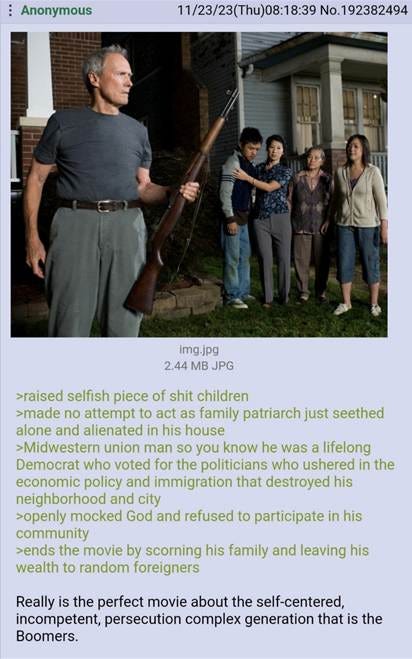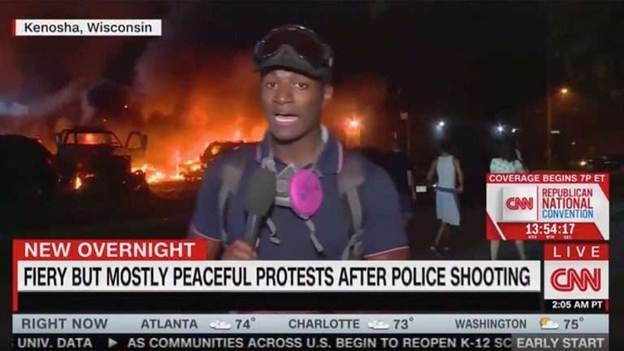By guest author Payload.
Talk about a movie that couldn’t be made today, Sidney Lumet’s Q&A (1990) is at the top of the list. What’s telling and disturbing is what the message of the movie is supposed to be: we all need to get along, and the retrograde and traditional ways need to progress to equality and acceptance that will achieve harmony, but “the system” won’t allow this to happen. While this is what Lumet intended, and it was not the first time he made a liberal utopia film — 12 Angry Men (1957) is a great example — any person viewing this today with even a moderately conservative leaning would see how preposterous this is. The reason Q&A couldn’t be made today is that it attempts to paint each character as a human being. What a novel concept! This is overdone, in my opinion, and takes away from the experience. The script is overwritten with snappy dialog. Hey, did you know this is how streetwise people in New York speak to each other?! This works well in the opening, but the impact of it diminishes as the film goes on; you’re left saying to yourself, “We get it already.” Q&A is important because it’s been left to the dustbin of history, not because it’s a bad or forgettable movie — Nick Nolte and Armand Assante’s (in my opinion the most underrated actor of all time) performances alone warrant recurring viewings. It’s been forgotten because 2020s America cannot handle what is depicted and ultimately exposed: the flaws in the “Post-World War II Consensus.”1
Q&A features complicated characters who have virtues and vices, conflicted motivations, a hero who’s put to the test and even succumbs to his lesser desires, white heterosexual men acting masculine and doing good things. Any media like this has been choked out by the conglomerate studio industry. We have seen over the past few years big money being dumped into projects that amount to cultural terrorism and often are box office bombs. Killers of the Flower Moon, Woman King, The Lost City, Blink Twice, Luckiest Girl Alive, Oceans 8, Hidden Figures, and Till — and who can forget the total destruction of the Star Wars franchise? The list goes on and on and on. A plethora of films and shows do all or some of the following: their source material inverted, historical events made up partially or from out of whole cloth, or ham-fisted “original stories” concocted by the writer regurgitating sociology lectures from college.
One reaction that needs to be addressed is the stupid platitude of “Go woke, go broke.” This is pure normiecon cope. These multinational companies and banks know exactly what they are doing. When Larry Fink of BlackRock goes on the globalist conference circuit and says, “We are going to force behavior,” what do you think he’s referring to?2 Companies are toeing the line because they want to survive when the full Technocracy takes hold, as BlackRock is the majority shareholder of 89% of the S&P 500.3
While the movies listed are pretty obvious, there are others that are more nuanced and insidious. The megahit show Yellowstone is a great example. The show is crack for the white Fox News Boomer crowd. The series has an exterior and visual presentation of being masculine, rugged, and even conservative, while the messaging is anything but. The show focuses on Indians-having-their-land-stolen cope, white men are evil who attempt to lead, and childless “boss bitch” females who are “oppressed” by the men around them. It’s no surprise that the Boomer generation can’t pick up on this; surface-level appearance is enough. Keep in mind, this is the same generation who can’t seem to figure out “voting the bums out of Washington” isn’t a solution, but it’s too much work to figure out why this country has the problems it does. If it’s not on TV or in the morning newspaper, it doesn’t exist. Gran Torino (2008) is a profound example of the same phenomenon with Boomers and normiecons. The message of the film is lost due to a superficial masculine exterior of the main character.
Q&A serves as a time capsule of an America that existed a short time ago. The film showcases a world that is on the verge of crumbling, those set in their ways and tied to the past attempting futilely to hold everything together while being outnumbered and surrounded by a mob about to storm the gates. We can in hindsight see the hellish world of Anarcho-Tyranny4 that many parts of America have become.
The lead villain Mike Brennan (Nick Nolte) now appears as a sympathetic hero in the immoral, corrupt meatgrinder of New York City, which is depicted as a multicultural cesspool of depravity that it is. The flaws and darkness of Nolte’s character don’t have the impact they probably did in 1990. His apparent weaknesses: homosexuality — questionable, as it never actually manifests, so it could have been feigned for entrapment purposes — and bigotry and racism — words which mean nothing now due to postmodernism and bending of the law. The American justice system has been hijacked by NGO money, particularly from George Soros, to elect judges and DAs who intentionally will not prosecute violent criminals, particularly minorities.5 It can also be argued that Brennan is merely a product of his environment; he is in a wasteland of degeneracy and corruption. Liberal sloganeering of “And Justice for All” doesn’t exist on the street and in the justice system. The negative theory of law is inadequate to maintain order in a morally corrupt society, so extra measures have to be taken. If you are going to argue that Brennan is a villain, I would ask: “Compared to whom?”
Every time we hear about a minority committing murder or violent crime, the media at large and progressive ideologues demand that everyone consider the “context” of the situation. Personal responsibility isn’t possible for a minority, according to these people. The opposite occurs with a white criminal. The real context for why this is has been occulted from the public.6
With all of the nonsense we are dealing with in America today, Brennan looks like a tragic figure, a crusader trying to maintain a semblance of normalcy that has already been destroyed to a large degree. Brennan knows he’s losing his grip, but no one else is there to back him up; everyone around him has gone along with the “progress” or has used him to do their dirty work. His closest friend and partner, Chappie (Charles S. Dutton), a black cop who sees Brennan for who he is and through everyone else, will only support him to an extent. Chappie serves as the moral center of the movie; he’s straddling the impending progressive deterioration while still sticking up for Brennan and the old ways when he can. Chappie also pushes back on the progressive white knights around him, particularly Reilly (Tim Hutton), who can’t fathom that a black man isn’t fully on board with the equality utopia that’s always just over the horizon but never arrives. We may never see a character like Chappie again in a Hollywood production.
Reilly: Got to admit, you and Brennan is not exactly a natural combination.
Chappie: Yeah? Why not?
Reilly: Jesus Christ, I mean, every word out of his mouth [insinuating the N word]. You should know better than anybody.
Chappie: It’s no big deal; it’s just his way. At least with him, it’s out in the open.
Reilly: How do you take it?
Chappie: I told you, no problem. He’s him. I’m me.
Reilly: What about the others?
Chappie: What others?
Reilly: The ones not so out in the open.
Chappie: Fuck ’em. They’re them. I’m still me.
Reilly: Can you, uh, can you spot them?
Chappie: Shit, yeah. You see, they ask a lot of dumb questions about what it’s like being a black policeman. Shit like that. … You want to know what color I am inside and out? I’m blue. And when I was in the Corps, I was olive drab or camouflage or dress blues or whatever was the fucking uniform of the day.
You cannot help but be refreshed by this exchange. So much is covered in this short dialogue. Notice how Reilly assumes that he knows how Chappie sees things merely because of his race; this is omnipresent now, but it was more veiled a few decades ago. The liberal worldview built on secular presuppositions removes the possibility of the transcendent or metaphysical categories; anything that is not material or derived from the senses does not exist. This is fundamentally reductionist. There are hundreds or possibly thousands of characteristics that make up a person or an object. A person or object is both one and many, and so is God (Trinity). Everything is made up of various qualities or elements which come together to make a unified whole; the qualities and elements are distinct from each other, not divided. This may seem obvious, but post-Enlightenment Western culture has been built on denying this reality.
There are different groups of people who have different presuppositions, worldviews, and ethos. People are similar and also different, just like they are one and many as described above. Dumping a bunch of different people on top of each other because “we’re all one race, the human race” is a recipe for disaster, most importantly because they see things differently and therefore take different actions which will always cause conflict. Why multiculturalism is so necessary cannot be brought up; if it is, it results in ad hominem name calling, because the person defending this nonsense can’t form an argument as to why it must happen. The notion that multiculturalism can bring harmony and peace is not only wrong; it’s totally backward.7
Now the whole world had one language and a common speech. As people moved eastward, they found a plain in Shinar and settled there.
They said to each other, “Come, let’s make bricks and bake them thoroughly.” They used brick instead of stone, and tar for mortar. Then they said, “Come, let us build ourselves a city, with a tower that reaches to the heavens, so that we may make a name for ourselves; otherwise we will be scattered over the face of the whole earth.”
But the Lord came down to see the city and the tower the people were building. The Lord said, “If as one people speaking the same language they have begun to do this, then nothing they plan to do will be impossible for them. Come, let us go down and confuse their language so they will not understand each other.”
So the Lord scattered them from there over all the earth, and they stopped building the city. That is why it was called Babel — because there the Lord confused the language of the whole world. From there the Lord scattered them over the face of the whole earth.
– Genesis 11: 1–98
Q&A isn’t a perfect movie; there are some downsides. The soundtrack is horrendous even by 1990 standards. The opening song plays throughout the movie and totally throws off the tone of scenes. Sidney Lumet’s daughter Jenny plays Reilly’s (Tim Hutton’s) love interest. I’ve never seen her in anything else, and there’s a clear reason for that: she can’t act. An obvious case of nepotism on Sidney Lumet’s part. The third act is not as strong as the first two; this is because the plot is unnecessarily elaborate. The final half-hour includes a chase sequence to Puerto Rico and back to New York, as well as the political intrigues of the current DA Homicide Bureau Chief angling to become Attorney General, none of which are needed. These flaws are excusable, and most importantly Q&A serves as a reminder of an era when the cracks in American society were becoming visible but not enough for those who were grounded in tradition and sanity to notice or act upon it. If Q&A feels like a breath of fresh air, what does that tell us about the state America is in now?
The Pete Quiñones Show, “EPISODE 1020: THE POST WW2 ‘ORDER’ W/ MARK WEBER,” February 29, 2024.
Auron MacIntyre, “Woke Capitalism In Action,” October 28, 2020.
Adrian Volenik, “‘They Already Own 89% Of The S&P 500, And Now They Are Coming After Single-Family Homes In America’ Warns RFK Jr.,” Yahoo! Finance, July 3, 2024.
Paula Adamick, “Succumbing to Anarcho-Tyranny,” Catholic Insight, April 15, 2023.
Brian Schwartz, “Nonprofit financed by billionaire George Soros quietly donated $140 million to political causes in 2021,” CNBC, January 4, 2023.
Dr. Johnson, “The Shifting Political Ideas of Martin Luther King: Socialism, Colorblindness and Violence,” January 26, 2022.
Jay Dyer, “Numbers Refute Materialism,” JaysAnalysis, November 17, 2018.
Genesis 11:1–9, “The Tower of Babel.”









Thank you for this. I have recommended this film on several streams, but I don’t think anyone ever watches it. You are quite correct that it paints a very different picture of multicultural relations than the World War II films where all the White ethnic groups basically get along with some good natured kidding. As the old Italian crime boss says about diversity. “You get to a crime scene these days you don’t know who to shoot.” The film was also prescient regarding gays and transsexuals. I think it was too realistic for audiences in 1990 and now it in the era of Woke it must be condemned unequivocally.